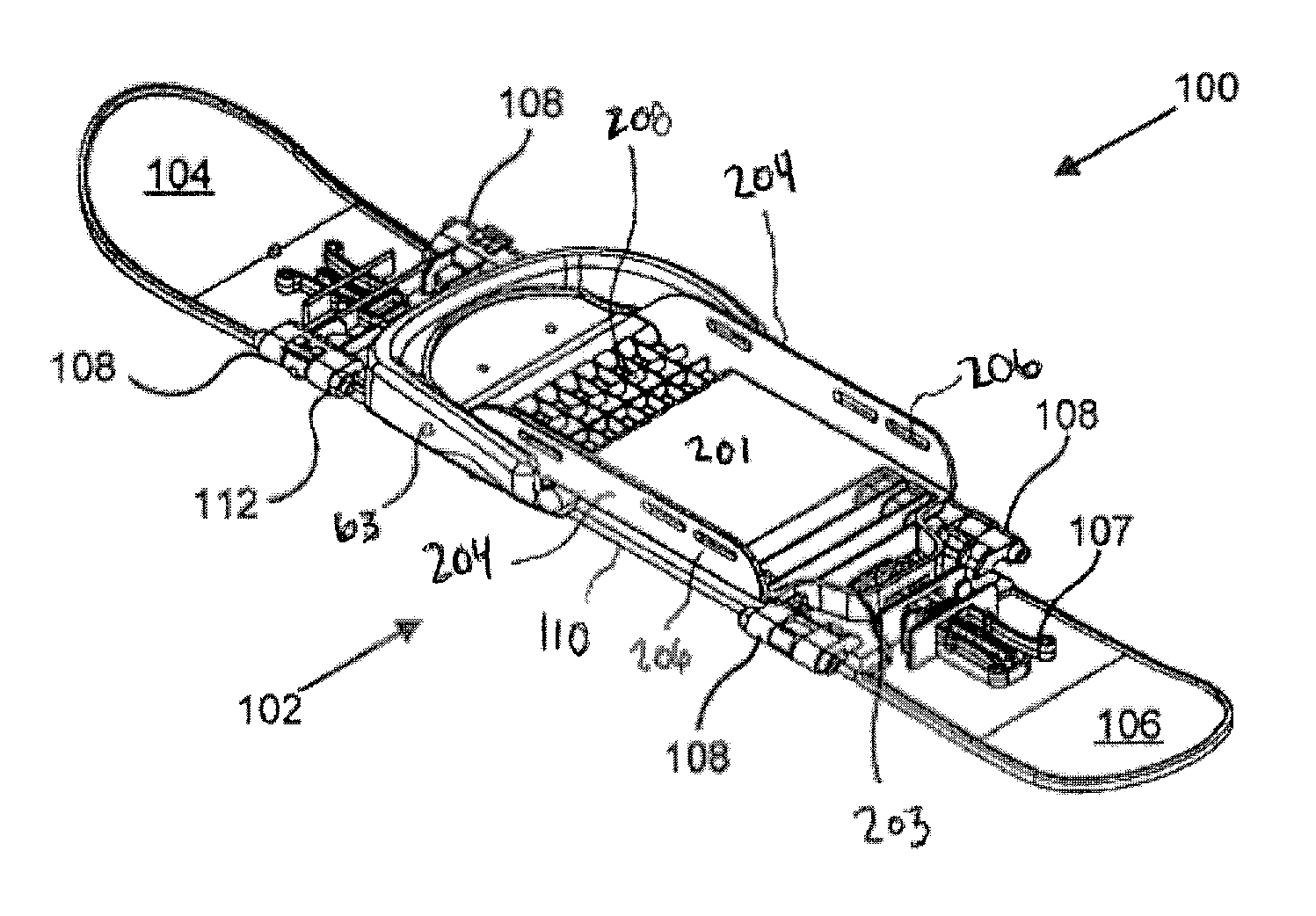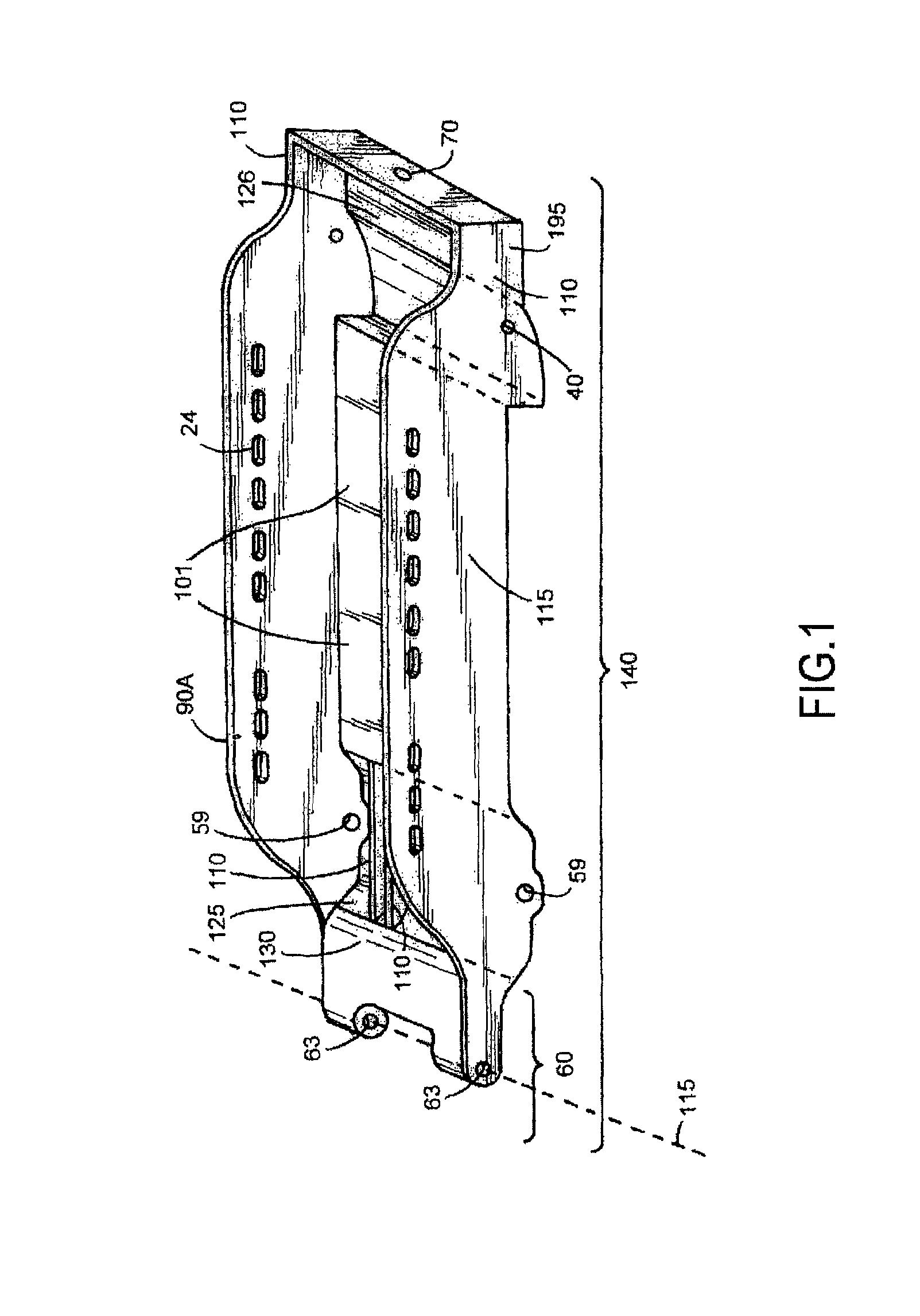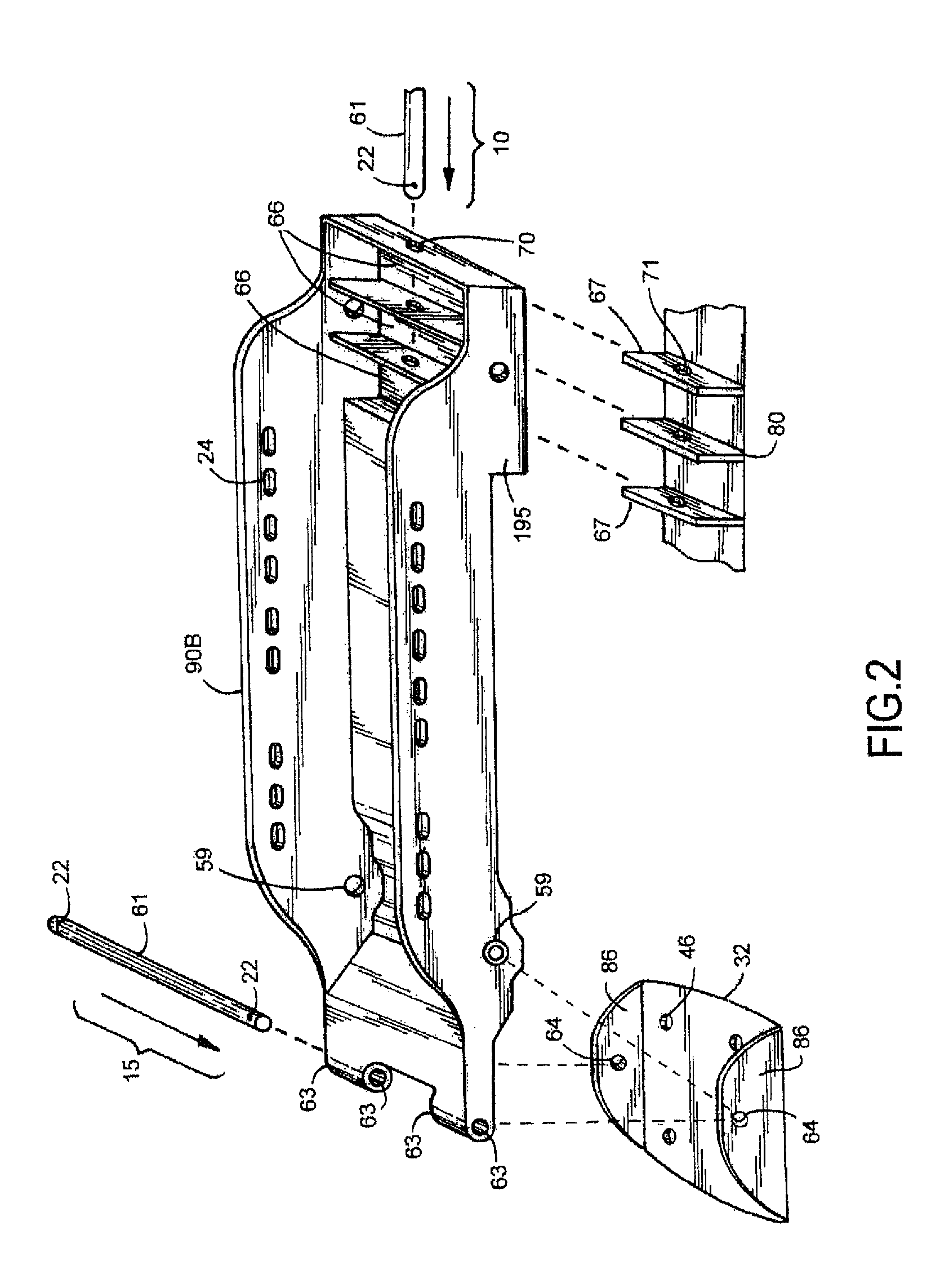Multiple direct touring positions for snowboard boot binding mounting base
a technology mounting bases, which is applied in the direction of ski bindings, skis, sport apparatus, etc., can solve the problems of affecting the use occupying too much space, and reducing the usefulness of snowboard boot bindings, so as to facilitate locking and unlocking, increase the usefulness, and increase the weight and manufacturing
- Summary
- Abstract
- Description
- Claims
- Application Information
AI Technical Summary
Benefits of technology
Problems solved by technology
Method used
Image
Examples
Embodiment Construction
[0069]Reference throughout this specification to “one embodiment,”“an embodiment,” or similar language means that a particular feature, structure, or characteristic described in connection with the embodiment is included in at least one embodiment of the present invention. Thus, appearances of phrases “in one embodiment,”“in an embodiment,” and similar language throughout this specification may, but do not necessarily, all refer to the same embodiment.
[0070]Furthermore, the described features, structures, or characteristics, of the invention may be combined in any suitable manner in one or more embodiments. One skilled in the art will recognize, however, that the invention can be practiced without one or more of the specific details, or with other methods components, materials, and so forth. In other instances, well known structures, materials, or operations are not shown or describe in detail to avoid obscuring aspects of the invention.
[0071]FIG. 1 is a top perspective view of a mo...
PUM
 Login to View More
Login to View More Abstract
Description
Claims
Application Information
 Login to View More
Login to View More - R&D
- Intellectual Property
- Life Sciences
- Materials
- Tech Scout
- Unparalleled Data Quality
- Higher Quality Content
- 60% Fewer Hallucinations
Browse by: Latest US Patents, China's latest patents, Technical Efficacy Thesaurus, Application Domain, Technology Topic, Popular Technical Reports.
© 2025 PatSnap. All rights reserved.Legal|Privacy policy|Modern Slavery Act Transparency Statement|Sitemap|About US| Contact US: help@patsnap.com



